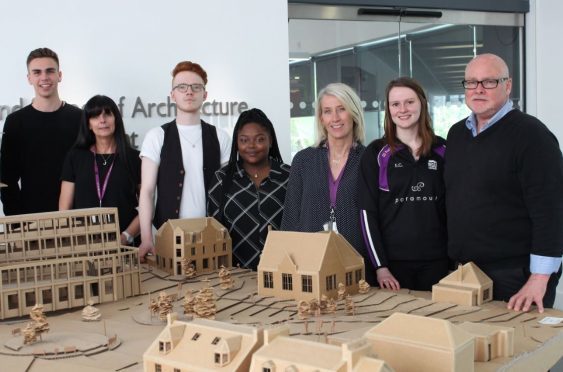Students from two very different subjects at a north-east university have joined forces to try and help dementia sufferers live fuller lives.
Architecture and occupational therapy students at the Robert Gordon University in Aberdeen have been putting their heads together to work on a better home environment for people living with the disease.
Dementia patients can face difficulties going about their day-to-day lives due to memory loss, disorientation and sight problems.
The students collaborated in various sessions to work on how patients’ homes could be redeveloped to better serve their needs, to allow them to live independently for as long as possible.
Dawn Mitchell, subject leader in occupational therapy, said: “These challenges can make finding their way around the environment or carrying out new or even familiar activities difficult.
“Through their unique understanding of these difficulties, occupational therapists can inform and influence design and building of inclusive environments.
“This process enables older people to remain active participants in society by allowing individuals to continue to participate in their chosen occupations while maintaining independence through reducing risk and building confidence.”
Meanwhile, a senior architecture lecturer has praised the initiative as an “invaluable” experience for his students.
Neil Lamb, subject leader in architecture, said: “This collaborative approach to teaching and learning made perfect sense for us, as the students could gain great insight from each other and ultimately it could lead to the improvement of living conditions those with dementia.
“The students worked incredibly well together and we are looking forward to developing this concept, given the success of the pilot and the positive feedback from both sets of students.”
